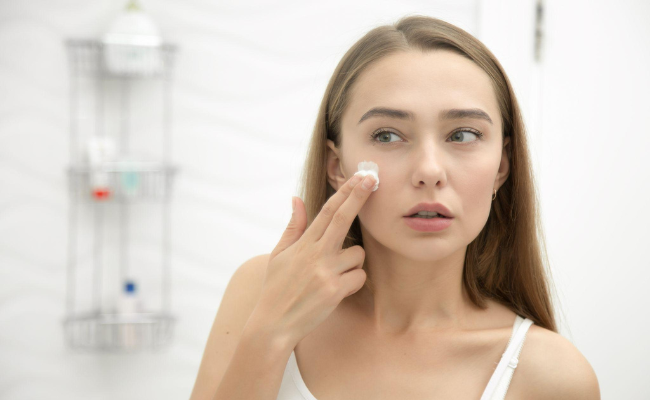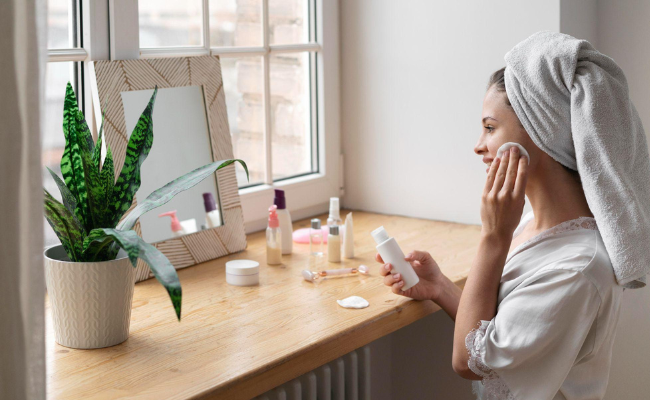Understanding Skin Types: A Comprehensive Guide for Women
Struggling to find the key to radiant, flawless skin? You’re not alone. A common roadblock is understanding skin types. Whether normal, oily, dry, combination, or sensitive, your skin type affects how it interacts with products, weather, and environment, and even your susceptibility to skin conditions.
This knowledge gap can lead to ineffective skincare product choices, draining your time, resources, and confidence. But don’t fret! We’ve crafted the solution: our comprehensive women’s skin types guide.
Gain crucial insights into your skin’s needs, make informed skincare decisions, and unlock your path to healthier, more radiant skin. Start your transformation today!
Fundamentals of Skin and Its Types
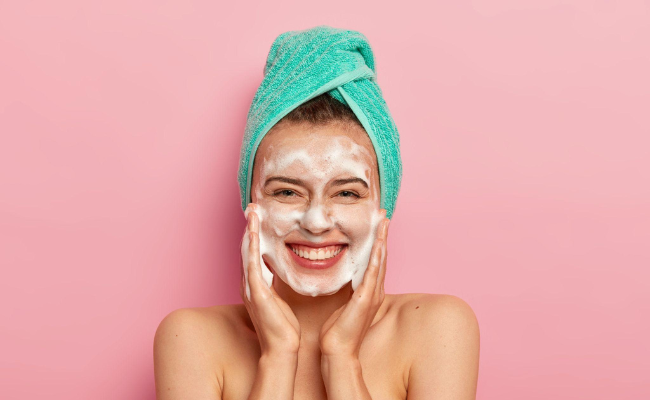 Want to know why understanding your skin type is necessary? It’s all about knowing what and how your skin reacts to several things, conditions, and products. Understanding your skin can help you take better care of it and know what to avoid. So get ready cause we’re about to hit you with some skin wisdom!
Want to know why understanding your skin type is necessary? It’s all about knowing what and how your skin reacts to several things, conditions, and products. Understanding your skin can help you take better care of it and know what to avoid. So get ready cause we’re about to hit you with some skin wisdom!
You may also like: Coconut Oil for Skin
Anatomy of the Skin
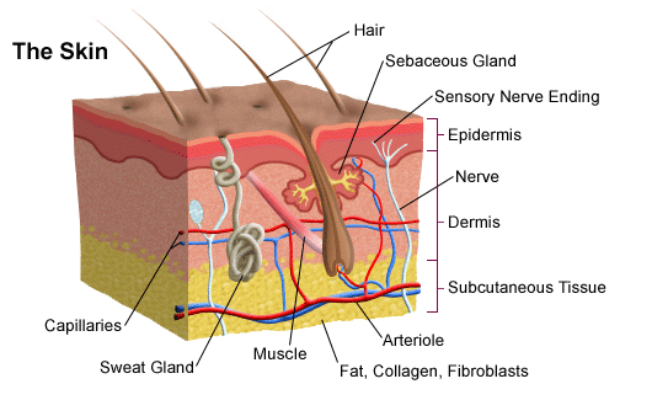
Source: Stanford Medicine Children’s Health
The skin is a crucial part of the human body as it serves as a protective layer for all other body parts, regardless of your skin type. It consists of three primary layers: the epidermis, dermis, and subcutis.
- Epidermis: The top of every other layer and protects against external factors. The epidermis plays a crucial role in preventing moisture loss, blocks harmful UV rays, and protects against pathogens.
- Dermis: This layer is directly below the epidermis and is made up of collagen, elastin, and blood vessels. It provides structural support to the skin and helps with elasticity and nourishment.
- Hypodermis: The deepest layer of the skin is known as the subcutis or hypodermis. It is composed of fatty cells that aid in controlling body temperature.
The Five Basic Skin Types
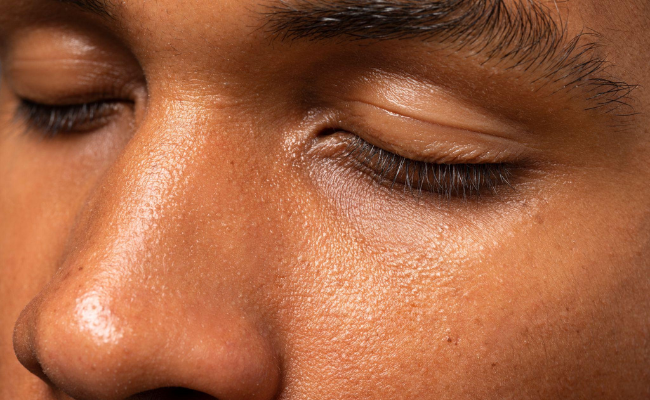
Normal Skin: Pores are typically small, and the skin has good blood circulation. Normal skin is less prone to blemishes, sensitivity, and fine lines. It appears fresh and rosy, maintaining uniform transparency.
Dry Skin: Dry skin is prone to fine lines and a tight sensation. Pores are generally small, making the skin feel uncomfortable. Adequate hydration, gentle cleansing, and rich moisturizers are crucial for nourishing and replenishing dry skin.
Oily Skin: It is prone to enlarge and clogged pores, leading to acne breakouts. Oily skin may feel heavy and require frequent cleansing. Despite the challenges, oily skin ages more slowly, with fine lines appearing later in life.
Combination Skin: Combination skin types may experience clogged pores, especially in the T-zone, while other areas may feel tight. Balancing the different needs of each area through appropriate cleansers, moisturizers, and targeted treatments is essential.
Sensitive Skin: It is prone to adverse reactions and makes your skin feel tight or uncomfortable. A soothing skincare routine with minimal potential irritants helps maintain the delicate balance of sensitive skin.
Determining Your Skin Type: A Step-by-Step Guide
Determining your skin type is critical to help you develop an effective skincare routine that caters to your specific needs. Whether you have normal, dry, oily, or combination skin, understanding your skin type will help you care for your skin with the most suitable products and address specific concerns.
Some individuals generally fall into these main skin types. However, they can also exhibit sensitivity or acne-prone skin characteristics. In essence, oily skin is more prone to acne breakouts, while dry skin tends to be more sensitive.
Conducting a Skin Analysis at Home
To identify your skin type from the comfort of your home, you can employ one or both of the following methods:
Wash and Wait Method
Start by gently washing your face with lukewarm water to remove any impurities. Then, allow your skin to rest for about an hour without applying any products. After waiting, examine your skin in a well-lit area and observe its appearance and texture.
Normal Skin: Has a smooth texture with no signs of dry patches or excessive shine. Pores are usually small and not easily visible. There are no major concerns, such as flakiness or redness.
Oily Skin: Has a shiny and slick appearance, especially in the T-zone (forehead, nose, and chin). Pores may appear larger and more noticeable. You may experience excess oiliness and may be prone to acne breakouts or clogged pores.
Dry Skin: This is if your skin feels tight and may have visible dry patches. Your skin may appear dull and lack moisture. Pores are typically small, and fine lines may be more noticeable. Dry skin can be prone to sensitivity and may require extra hydration and moisturization.
Combination Skin: The T-zone tends to be oilier. At the same time, other areas, such as the cheeks, may be drier. This skin type requires a balanced approach, targeting different concerns in specific areas.
Blotting Sheet Method
Wash your face, pat it dry, and wait for 30 to 60 minutes. Take blotting paper and gently press it against different areas of your face, including the T-zone, forehead, chin, and cheeks. Check the blotting paper after each press to observe any oil residue.
Oily Skin: The blotting paper will exhibit oil, indicating higher oil production.
Normal Skin: A small amount of oil on the blotting paper is normal and doesn’t signify an oily skin type.
Professional Skin Analysis
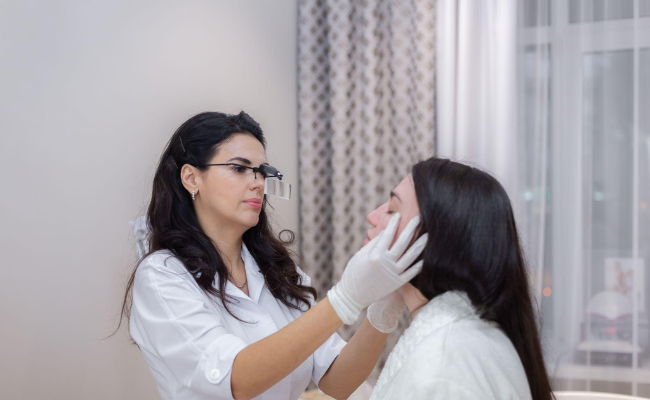
These professionals usually check for skin texture, tone, hydration levels, and visible concerns such as acne, fine lines, or pigmentation. The specialist may use advanced tools and technologies to measure oil production, moisture levels, elasticity, and UV damage.
The benefits of a professional skin analysis are numerous. It accurately assesses your skin’s needs, allowing for personalized treatment recommendations. As such, professionals can identify the root causes of skin issues and suggest targeted products and treatments.
The analysis also offers an opportunity to discuss your skincare routine, lifestyle factors, and goals. Experts can advise on effective skincare practices, suitable products, ingredients, and lifestyle adjustments.
A professional analysis can also detect early signs of skin conditions and potential issues, leading to timely intervention and improved skin health. By seeking professional analysis, you can gain valuable insights and make informed decisions about your skincare.
You may also like: Glassy Skin/Glass Skin
Tailoring Your Skincare Routine to Your Skin Type
After understanding what type of skin you have, you can now use this information to purchase products that are a perfect fit for you and formulate a skincare routine that is safe for you.
We’ve put together a detailed list of products and routines that are perfect for you. Whatever skin type you have, there is a routine for you!
Product Recommendations for Each Skin Type
To maintain smooth skin and maintain uniform complexion, here are a few tips for all skin types:
Normal Skin
Normal skin benefits from a balanced approach. Use a gentle cleanser, a lightweight moisturizer, and a broad-spectrum sunscreen. Also, use antioxidant-rich serums to protect against environmental damage. Add a weekly exfoliating treatment to maintain a smooth texture.
Dry Skin
Look for moisturizing cleansers that won’t strip away natural oils. Select a rich, hydrating moisturizer to replenish moisture in the skin. Opt for creamy cleansers and other products that contain hyaluronic acid or ceramides, like clay masks, for added hydration. Facial oils are also great for extra nourishment.
Oily Skin
Choose oil-free and non-comedogenic cleansers to remove excess oil and unclog pores. Choose lightweight, mattifying moisturizers to provide hydration without causing greasiness. Use products with salicylic acid or benzoyl peroxide to manage oil production and treat breakouts. Use oil-absorbing sheets throughout the day to control shine.
Combination Skin
Use a gentle cleanser to avoid stripping natural oils. Consider a lightweight moisturizer for the normal-to-dry areas and oil-free products for the T-zone. Use spot treatments for breakouts and adjust your routine based on the specific needs of different areas.
Sensitive Skin
Look for fragrance-free and hypoallergenic products to minimize irritation. Use gentle cleansers, moisturizers with soothing ingredients like aloe vera or chamomile, and Mineral-based sunscreens. Before trying new products, perform patch tests, and avoid harsh exfoliants or strong, active ingredients.
Maintaining Your Skin Health

- Cleanse and Moisturize: Cleanse your skin twice daily to remove dirt, oil, and impurities. Follow up with a moisturizer and clay mask therapy to hydrate and nourish the skin. This helps maintain its natural moisture barrier and prevents dryness or excessive oiliness.
- Protect from the Sun: Shield your skin from harmful UV rays by applying a broad-spectrum sunscreen with a high SPF. Sun exposure is a major cause of premature aging, sunburns, and the risk of skin cancer.
- Hydrate and Eat a Balanced Diet: Drink adequate water daily to keep your skin hydrated from within. A balanced diet rich in fruits, vegetables, and omega-3 fatty acids provides essential nutrients for healthy skin.
- Avoid Smoking and Limit Alcohol Intake: Smoking and excessive alcohol consumption can lead to premature aging, dullness, and skin damage. Quitting smoking and moderating alcohol intake can significantly improve the health and appearance of your skin.
- Get Adequate Sleep and Manage Stress: Sufficient sleep and stress management contribute to healthy skin. Lack of sleep and chronic stress can disrupt the skin’s balance, leading to dullness, breakouts, and other skin concerns.
As far as skincare routines are concerned, consistency is everything. Establishing a daily regimen and sticking to it helps maintain the health of your skin. Regular cleansing, moisturizing, and sun protection form the foundation of a good skincare routine. Additionally, incorporating targeted treatments based on your skin type and concerns can further enhance its health and appearance.
Conclusion
This extensive guide has provided valuable insights into the significance of understanding women’s skin types. You should have a better understanding of the five prevalent skin types. We also thoroughly discussed the relevance of genetic factors, lifestyle choices, and environmental influences that impact your skin’s behavior.
It’s time to embark on a customized skincare regimen. Embrace your individuality and tailor a routine to address your specific requirements. Take control of your skin health, indulge in self-care, and benefit from the transformative effects of a personalized approach to skincare.

